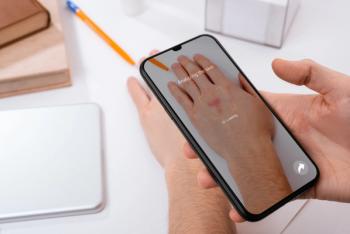
- Dermatology Times, September 2019 (Vol. 40, No. 9)
- Volume 40
- Issue 9
Cheek swab IDs genes linked to non-melanoma risk
Researchers recently examined a non-invasive test that, if additional studies can confirm, may directly affect future patient care for patients at risk for non-melanoma skin cancer.
A recent study indicates that a quick swab of the inside of a patient’s cheek could help dermatologists identify whether an individual is at risk for
In an article published recently in the Journal of Drugs in Dermatology, investigators tested whether a 20-stroke buccal swab could accurately identify patients in the general population who had particular genetic markers for non-melanoma skin cancer. According to the results, the test pinpointed four
This test introduces a new, potentially more definitive way, for dermatologists to identify genetic components present in individual patients that might be at risk for developing non-melanoma skin cancer. It’s an evolving tool that could be highly useful in the future, she says. Therefore, it could facilitate proactive treatment in these patients.
A lot of clinicians just classically look at the skin type and sun exposure history, but now science and consumers are evolving and getting smarter,” Dr. Moy says.
The purpose of the study was to determine if results similar to those of the test’s manufacturing company could be achieved in a real-world situation.
Dr. Moy and her colleagues reviewed the test results of 38 individuals - 19 with a history of non-melanoma skin cancer and their 19 age-matched spouses who had no skin cancer history. All participants lived in Southern California and were an average of 45.5 years old.
By choosing married couples, the team maximized the likelihood that all individuals had roughly the same level of exposure to the sun, as well as contact with other environmental factors, Dr. Moy says. This made the results as generalizable to the overall population as possible, she adds.
The analysis searched for the presence of seven SNPs that were previously identified to be associated with non-melanoma (and melanoma) skin cancer: TDG/GLT8D2, XRCC1, MC1R, TP53, PIGU, Chromosome 1, and PAD16.
The researchers used a polymerase-chain reaction method to genotype the SNPs. While no data was strong enough to be considered statistically significant, the results did show a direction of trend, she says. Based on the evaluations, four SNPs - Chromosome 1, PAD16, PIGU, and TDG - showed a positive trend toward a non-melanoma skin cancer association. The probability values were 0.64 for Chromosome 1, 0.40 for PAD16, 0.19 for PIGU, and 0.72 for TDG - all with an expected association between genotype and outcomes. The other SNPs showed no discernible effect on outcomes.
Additional testing with a larger population is needed to further define the impact of these SNPs, Dr. Moy says. Confirming the role these markers play in potential diagnosis could directly affect patient care.
While it is possible that life-long sun exposure plays a bigger role in prompting skin cancer than a patient’s genetic make-up, studies conducted with more participants could help create a more-detailed genetic profile of individuals who are at a greater risk of developing skin cancer.
“We’re at the start of really understanding the genetic contribution that affects DNA damage,” she says. “And, a test like the buccal swab can point us in the right direction to focus on the people who have more DNA damage who might need more chemo-preventive measures.”
This test could help dermatologists target patients who could benefit from early treatment with DNA repair enzymes or oral nicotinamide, she says. Pinpointing at-risk patients and initiating therapy with various treatment regimens or medications before significant disease presents could help dermatologists to eliminate or limit the impact of
This type of test also presents benefits to patients, Dr. Moy says, because it is simple to complete. In addition, patients do not need to be in any certain level of good health for the test to be successfully administered.
“The buccal swab is a great method because it’s non-invasive and is very easy for patients to participate,” she says. “It’s very attractive because you don’t have to do a skin biopsy or test tissue - you just open your mouth. It’s something that everyone can be comfortable with.”Â
References:
1. Moy L, Lyons AB, Fox W, Glicksman MA, Moy R, Tung R. Non-Invasive Buccal Swab Gene Testing for Skin Cancer Risk. J Drugs Dermatol. 2019;18(5):448-453.
Articles in this issue
over 6 years ago
Genetic test could rule out melanoma diagnosisover 6 years ago
Atopic dermatitis treatment advances on psoriasis researchover 6 years ago
What are my liabilities with telemedicine?over 6 years ago
Desire for clearance high in atopic dermatitis patientsover 6 years ago
Dermatologist discusses permanent eyeliner, microbladingover 6 years ago
New rosacea therapies show promiseover 6 years ago
Sleep problems common in psoriasisover 6 years ago
Your melasma questions answeredover 6 years ago
Let’s talk about melasmaover 6 years ago
Skincare advice across the generationsNewsletter
Like what you’re reading? Subscribe to Dermatology Times for weekly updates on therapies, innovations, and real-world practice tips.


















